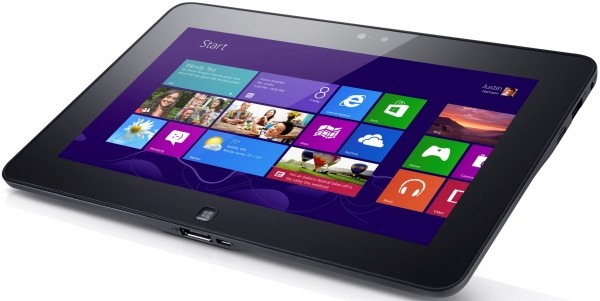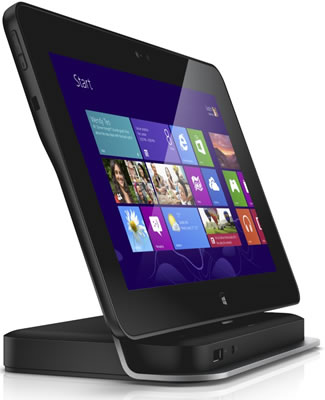Dell has launched an updated version of its Latitude 10 with improvements for enterprise customers. The company says its "Enhanced Security" edition device offers more security features than any other tablet available – Windows 8 or otherwise – making it ideal for government, healthcare and financial organizations.
It's said that the Latitude 10 Enhanced Security is the only dual-authentication Windows 8 tablet around, providing an integrated SmartCard and fingerprint reader. Other security features include Dell Data Protection, Trusted Platform Module 1.2, Microsoft BitLocker full-drive encryption, Computrace, and a Noble Lock slot.
According to some hands-on reports, the added SmartCard and fingerprint reader produces a more noticeable bump on the back of the Enhanced Security edition than you'd find on the standard Latitude 10. Naturally, all the extras add up and the new variant is priced at $779, $200 more than the Latitude 10 64GB.
In case you're unfamiliar with the device, it packs a 10.1-inch 1366x768 IPS display with five-finger touch support and Gorilla Glass protection, an Intel Atom Z2760, 2GB of DDR2 RAM, a 64GB SSD, 802.11n Wi-Fi, Bluetooth 4.0, HSPA+ support, a 720p front camera and 8MP rear camera, and a swappable 30Whr battery.
To help pitch its updated slate, Dell cited a study it commissioned with Intel via Harris Interactive which polled 204 US healthcare IT decision makers about tablets. Apparently, the responding organizations spend about $2,235 configuring tablets to work with their infrastructure – many times the cost of the devices themselves. About half of those institutions say they have to spend extra time adding software or tools – some of which aren't even available for tablets – and tweaking security when TPM isn't included.

Dell also mentioned testing performed by Principled Technologies, which compared how easy it was to implement the Latitude 10 and the iPad in large scale environments. The researchers purportedly concluded that the former is 17% faster and 94% less expensive to deploy, saving some 580 hours in system preparation and installing applications. Additionally the Latitude 10 is supposedly 99% faster when it comes to updating software and it's 85% cheaper per device to maintain over a three-year span.
